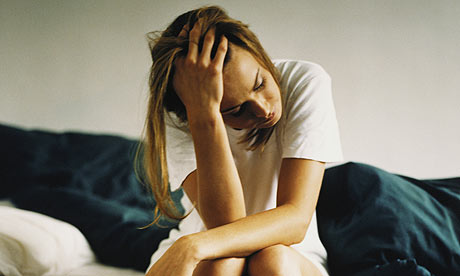
How many people in the UK will suffer a mental health problem at some point in their lives? The most popular answer is one in four. For years, this statistic has been quoted by everyone from mental health charities to government ministers. The ongoing national Time to Change anti-stigma advertising campaign is awash with one in fours. But where does this number come from?
There is actually no hard evidence for one in four – or any other number – because there's never been any research looking at the overall lifetime rates of mental illness in Britain. The closest thing we've had is the Psychiatric Morbidity Survey, run by the Office of National Statistics. The latest survey, done in 2007, found a rate of about one in four, 23%, but this asked people whether they'd suffered symptoms in the past week (for most disorders).
We don't know what the corresponding rate for lifetime illness is, although it must be higher. Several such studies have been done in other English speaking countries, however. The most recent major survey of the US population found an estimated lifetime rate of no less than 50.8%. Another study in Dunedin, New Zealand, found that more than 50% of the people there had suffered from mental illness at least once by the age of 32.
So can half of us really expect to experience mental illness? Maybe, but some experts have another interpretation of these startlingly high figures. For example, in their book The Loss of Sadness, American sociologists Allan Horwitz and Jerome Wakefield argued that the high rates of clinical depression seen in surveys like these are largely a reflection of flaws in the diagnostic criteria used to define and detect this condition. According to the most widely used criteria, you have clinical depression if you have two or more weeks in which you experience five or more symptoms from a list of nine, such as decreased motivation and difficulty sleeping. But the criteria don't consider why you might be feeling that way (the one exception being grief following bereavement).
So feeling temporarily down about a loss, stresses, or personal troubles is classed as "depression", even if most people would see such cases as a normal emotional response. Horwitz and Wakefield's argument applies to other common disorders, such as anxiety, as well. A very large proportion of people meet the criteria for these illnesses, but this doesn't necessarily mean they're ill. At present, the most used diagnostic system is the DSM-4 handbook produced by the American Psychiatric Association. The draft of the new DSM-5 criteria was recently been made available online and has provoked further debate over the dangers of "medicalising" normality.
This doesn't mean mental illnesses don't exist. In many cases, they're serious diseases, which require treatment and care. But unfortunately, we don't really know how common these diseases are, because the criteria upon which almost all the research is based are so broad. Why, then, has the one in four figure become so widespread? I think the answer is that it appeals to advocates for those who suffer mental illness. It's a nice quotable statistic, not so high that it raises sceptical eyebrows (as 50% does), but high enough to get across the message that mental illness is "normal", and that those who experience it are not some rare and dangerous other species.
This is an important message. People who experience mental illness often face stigma and discrimination, and it's right to oppose this. But stigma is wrong whether the rate of mental illness is one in four, or one in 400. We shouldn't need statistics to remind us that mental illness happens to real people. By saying that mental health problems are nothing to be ashamed of because they're common, one in four only serves to reinforce the assumption that there's something basically shameful about being "abnormal".
One in four also implies that mental illness is no big deal, since so many people experience it and manage to get by OK. Again, this is useful to an extent, as an antidote to the myth that those who experience mental illness will never be able to enjoy any kind of a usual life. However, it risks going too far in the other direction. Clinical depression, for example, really is more than just the everyday ups and downs that everyone goes through, which is why sufferers need treatment rather than advice to just "pull themselves together" or "deal with it".
What's worse, by quoting high prevalence figures as fact without reference to their controversial origins, mental health campaigners may be unwittingly helping those who have an interest in selling treatments to the masses – whether they be drugs, psychotherapy, or self-help books. This blurring of the line between health and illness can only hurt those who are genuinely ill, by diverting money and attention away from them. Mental health services are stretched enough as it is, without being asked to care for one in four of us, and in the light of fears that NHS budget cuts could have devastating consequences for the seriously mentally ill, can we afford to cast the net of "illness" so wide?
• This article was commissioned after the author contacted us via a You tell us thread. If you have your own subjects that you would like Cif to cover, please visit the latest thread

